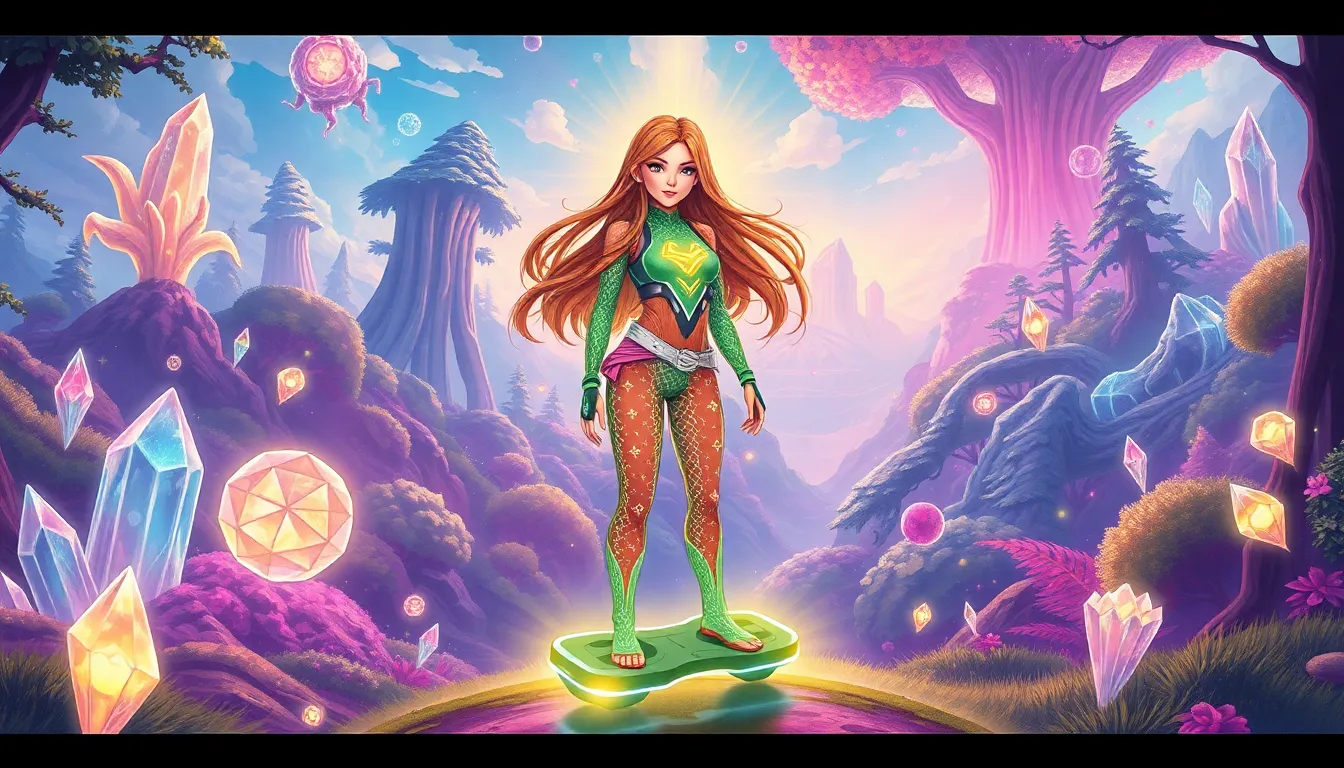In a world where dragons soar and wizards wield unimaginable power, fantasy technology takes center stage, blending the extraordinary with the absurd. Imagine a smartphone powered by a magical crystal or a hoverboard that runs on the laughter of elves. It’s not just a whimsical dream; it’s the playground of creativity where the impossible becomes possible.
Fantasy Technology
Fantasy technology represents the convergence of imaginative elements with futuristic concepts. It embodies inventions that exist beyond the limits of known science. Examples include devices driven by magical forces or enhanced by mythical creatures.
This genre often features tools that exhibit extraordinary abilities. Enchanted gadgets, like smartphones powered by magical crystals, enhance communication through unexplainable means. Hoverboards, fueled by the laughter of elves, defy gravity and create unique transportation experiences.
Creators in literature and entertainment introduce these concepts to evoke wonder. They often challenge conventional views of technology, presenting a world where magic enhances the functionality of everyday items. Characters utilize fantasy technology to navigate their environments, solve problems, or embark on quests.
Through this lens, fantasy technology becomes a vehicle for storytelling. It invites audiences to explore the boundaries of imagination while considering what technology could resemble in a reality mixed with magic.
Fantasy technology captivates audiences by merging the familiar with the fantastical. It showcases potential advancements by integrating mythical elements into the narrative. This friction between reality and fantasy expands the scope of technological potential in creative storytelling.
Key Characteristics Of Fantasy Technology

Fantasy technology thrives on imagination and creativity, crafting inventions that ordinary technology cannot replicate. Visionaries create devices that evoke awe, like self-repairing armor or talking animals. Inventors often draw inspiration from folklore and dreams, leading to unique concepts that captivate audiences.
Imagination And Creativity
Imagination fuels the development of fantasy technology. Designers envision gadgets beyond modern capabilities, like flying carpets or time-traveling watches. These creations stimulate curiosity and inspire innovative thinking, allowing storytellers to explore new ideas and possibilities. Creativity often blends familiar elements with extraordinary characteristics, resulting in devices like enchanted smartphones or magical maps. Such inventions challenge perceptions and invite audiences into worlds where anything is possible.
Integration With Magic
Magic plays a central role in fantasy technology, harmonizing with scientific principles to create extraordinary capabilities. Devices powered by mystical forces, like potions that enhance strength, appear frequently. Integration of magical elements elevates ordinary tools into extraordinary artifacts, as seen with spell-casting wands or enchanted weapons. This synergy invites audiences to ponder the relationship between technology and the supernatural. Narratives often explore how characters harness magic-infused technology to solve problems, transforming mundane tasks into epic quests.
Examples Of Fantasy Technology In Literature
Fantasy technology appears in various literary works, illustrating the imaginative potential of combining magic and innovation. Many authors capture readers’ attention with unique inventions that challenge reality.
Classic Works
Classic literature often showcases early examples of fantasy technology. In J.R.R. Tolkien’s “The Lord of the Rings,” magical rings grant significant powers and influence human actions. Lewis Carroll’s “Alice’s Adventures in Wonderland” features whimsical items like the bottle labeled “Drink Me,” altering Alice’s size. Mary Shelley’s “Frankenstein” examines the boundaries of technology through Victor Frankenstein’s creation, blending science with a supernatural twist. These pioneering works sparked the imagination, inspiring future creators to expand on such concepts.
Modern Interpretations
Modern fantasy literature continues to evolve ideas around technology. In the “Harry Potter” series, J.K. Rowling introduces enchanted objects such as the Marauder’s Map and time-turners, combining magic with everyday items. Neil Gaiman’s “American Gods” illustrates technology’s influence on mythology, where gods adapt to contemporary society through devices like smartphones. Patrick Rothfuss’s “The Name of the Wind” features musical instruments that produce magical effects, merging art with technological prowess. These interpretations highlight ongoing innovation within the genre, encouraging readers to explore limitless possibilities.
The Role Of Fantasy Technology In World-Building
Fantasy technology plays a crucial role in crafting immersive worlds. It connects magic with innovative inventions, expanding creative narratives through unique devices. Listed below are essential functions of fantasy technology in world-building:
- Enhancing Atmosphere: Enchanted tools contribute to the mood of a setting. Magic-infused objects like crystal orbs illuminate dark castles, setting a tone of mystery and intrigue.
- Driving Plot Development: Special gadgets often drive character decisions and plot twists. For example, a time-traveling device can reshape the story, leading to unforeseen challenges and resolutions.
- Creating Character Identity: Characters often represent technological innovations that define them. Inventors wield astonishing capabilities, showcasing their expertise and impacting the world around them.
- Deepening Thematic Elements: Combining technology and magic brings forth thematic discussions about humanity’s relationship with innovation. This exploration often reveals moral dilemmas associated with power and responsibility.
- Inviting Reader Engagement: Intriguing devices stir curiosity and imagination. Readers become invested in understanding how gadgets function, sparking interest in the broader world.
Prominent fantasy works exemplify these functions, reinforcing the genre’s significance in literature. Notable examples include J.R.R. Tolkien’s imaginative creations in “The Lord of the Rings” and the inventive spells in the “Harry Potter” series. Meanwhile, modern narratives continually introduce fresh concepts, showing how fantasy technology evolves with creative storytelling.
Ultimately, fantasy technology enriches world-building by blending extraordinary elements with familiar frameworks. It opens doors to limitless possibilities, challenging perceptions of reality and promoting inventive thought.
Conclusion
Fantasy technology captivates the imagination by merging the extraordinary with the familiar. It invites creators and audiences alike to explore realms where magic enhances innovation, transforming everyday experiences into epic adventures. This genre not only enriches storytelling but also challenges conventional notions of technology and its potential.
As creators continue to push the boundaries of what’s possible, fantasy technology will remain a vital component in shaping narratives that inspire wonder. By blending magical elements with inventive concepts, it encourages a deeper exploration of humanity’s relationship with innovation and the moral implications that arise. The journey through this imaginative landscape opens doors to limitless possibilities, fostering curiosity and creativity in every reader.

